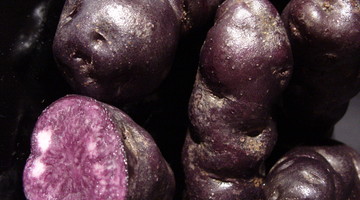Tāhuri Whenua supports Māori growing taewa and other traditional Māori crops such as kūmara and kānga. Regular hui bring the growers together to share information and resources. This is helping Māori improve crop yields and train younger people as well as creating new opportunities for Māori horticulture.
Transcript
Dr Nick Roskruge (Massey University)
I think the over-riding objective for Tāhuri Whenua at the beginning was about supporting Māori opportunity in horticulture, so not just the taewa, but also with kūmara, with kānga and those sorts of crops – creating an opportunity that was uniquely Māori, supporting it with good information, which is what the research projects do, and good mechanisms to make sure that information was available in culturally sort of successful ways, so through hui, through other mechanisms and then being there to support the growers year by year. So not just a one-off visit and then disappearing, but a constant process, and that's what it’s doing.
The genesis was out of the [research] projects I guess because there was quite a strong interest from a mixture of people up and down the country – individuals, marae, all those sorts of things, that wanted to a) be involved in the project or at least be involved in the information sort of flow, to know what was going on and to know how it could contribute to what they did, and b) it was about the positive sort of opportunity for Māori land, for utilisation of those resources, and it was a good vehicle to sort of apply that to. So out of that we had a hui in 2001, where the concept was the birth of the Tāhuri Whenua collective, to the point now where there is about 260 odd members up and down the country, and they have regular hui that focus on Māori horticulture. Part of that is about supporting the growers that are out there because a lot of them are isolated or they don't have a cluster of people in their immediate vicinity, so it’s a conduit to pull them together and to work with each other and to feed off each other. And part of that also contributes the ability to sort of collectively supply markets and collectively share seed and all of those sorts of things.
It’s also on succession to managing Māori resources, so training our young ones to come through and become the crop managers, the land managers and all of those sorts of roles in the future, because a real big issue, both for Māori but also in horticulture and agriculture, is if you look at the average age of the managers, they are all over 50 or over 60, and we don't have a generation coming through to pick up those roles. So one of the objectives is to try and fill that void – identify people who do have that potential and give them that support and encouragement to go and train. Come to a place like Massey or go to polytech, those sorts of places, and get some skills. But the other is to grow that Māori opportunity in the horticultural sense, so taking charge of being growers, being producers in the industry, so not being outside of the industry but participants in the industry and being able to put a Māori label to some of the production, you know, it’s a uniqueness about some of those foods.
Acknowledgements
Hamuera (Joe) McLeod
Huub Kerckhoffs
Tahuri Whenua



